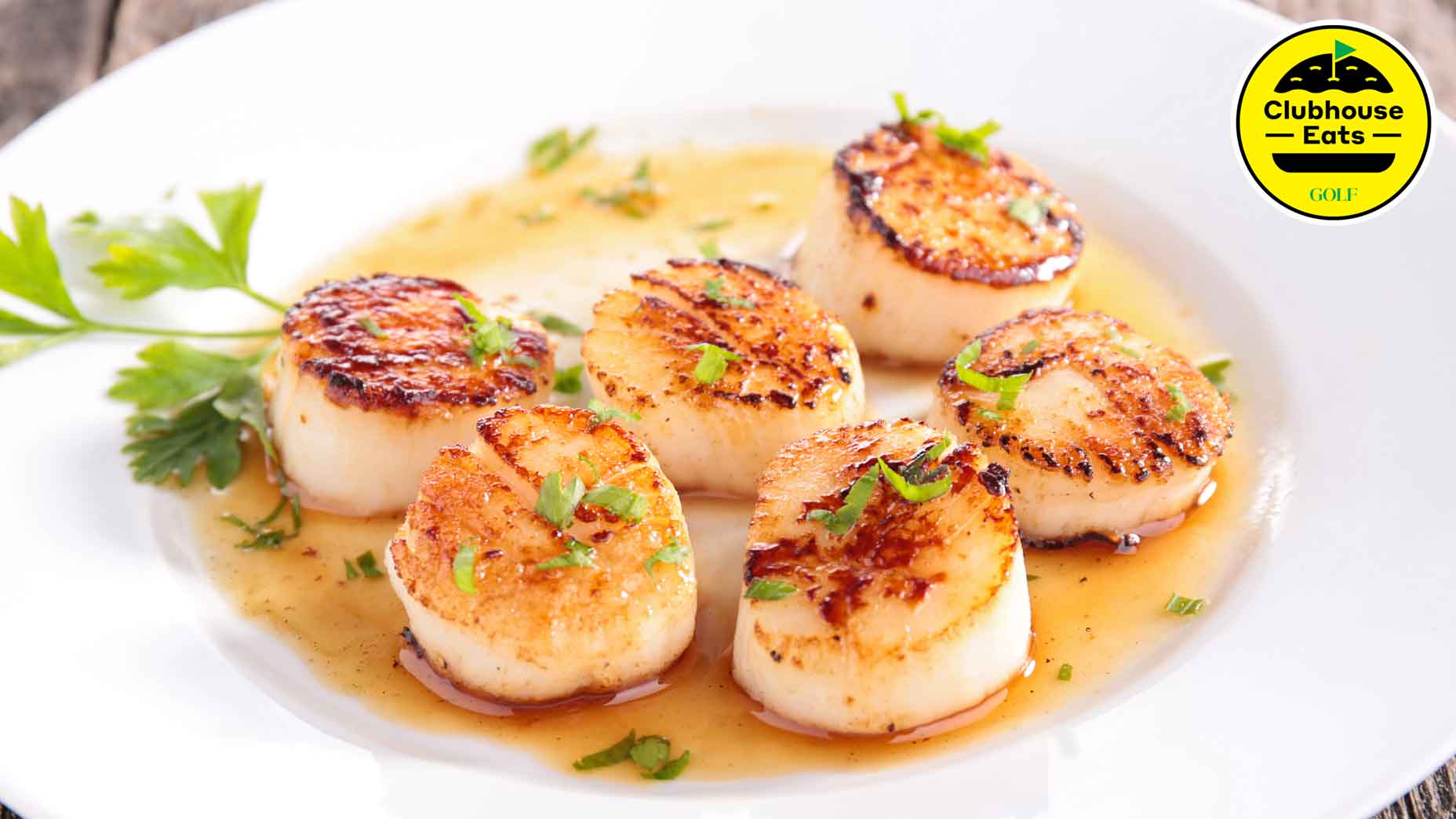With the summer season upon us, fresh seafood suddenly becomes the plate du jour — both at seaside restaurants and in homes pretty much anywhere. Plump sea scallops (sometimes referred to as diver scallops if they’re hand-harvested), are a versatile bounty of la mer, though their delicate nature might dissuade some home cooks from swooping them up at their local fish market.
To quell that intimidation, we sought the advice of Mashpee, Massachusetts’ Willowbend Golf Club’s executive chef, Omario Shaw, who serves pan-roasted George’s Bank scallops atop a tomato-olive emulsion, all of which is accented by sautéed corn, fingerling potatoes, cherry tomatoes, haricot verts, and pancetta. Pan-roasting isn’t the only effective cooking method for scallops, however, so we asked Chef Shaw for his tips on a number of different preparations.
First and foremost — even before you commit to a style of cooking — Shaw implores the proper cleaning and thorough drying of the scallops first. This is even more important if you’re pan-searing or pan-roasting the succulent shellfish. “It will prevent water damage to your oil,” Chef Shaw explains, “which can reduce the quality of the finished dish.”
As for that oil, you’ll want to coat the sauté pan or skillet with a thin layer of it and let it come up to temperature before adding the scallops. While you may be conditioned to grab that go-to bottle of olive oil, consider grapeseed oil, which has a higher smoking point. Or take a page out of Chef Shaw’s book and use 75/25 olive oil (75-percent canola oil; 25-percent olive oil). “It’s a higher temperature oil,” Shaw explains.
If you’re pan-searing or pan-roasting your scallops, a good practice is to cook them over medium temperature. This will help to ensure that the scallops retain their moisture and natural flavors. “Overheating your sauté pan or skillet is the biggest downfall that most amateur cooks make,” the chef says.
And don’t attempt to sear both sides of the scallop — this will overcook them. Instead, once you have a nice caramelized sear on one side (a rich brown color), flip the scallops, add a couple tablespoons of butter, and remove the pan from the heat (it’ll stay plenty hot for a while). Once the butter melts, baste the scallops with the melted butter for three to five minutes. Not only does this technique add flavor, it also keeps the scallops moist and tender.
Around this time of the year, many home cooks have a strong affinity for their gas or charcoal grills, and while those devices can cook scallops effectively, the process is just a little more complicated. In particular, a grill basket is key — especially one designed for fish — as the finer, stainless steel bars will impart the flavors of the grill without burning the scallops. The protein also benefits from a little extra attention ahead of time. “A good method for grilling scallops is to marinate with olive oil, salt, and pepper,” Chef Shaw says. “The oil will prevent the scallops from sticking to the grill.” (Again, 75/25 olive oil is recommended.)
And if you have an immersion circulator, cooking scallops using a sous vide technique can produce excellent results. In particular, Chef Shaw suggests seasoning the scallops with salt and pepper, then vacuum-sealing them in a bag with olive oil, two tablespoons of butter, and three tablespoons of fresh thyme. Just be careful about the temperature of the water that you use and the amount of time the scallops stay in that water bath. “I only recommend you sous vide scallops at 122 degrees for 30 to 40 minutes,” Shaw says. “I also recommend a quick hard sear after sous vide. This will help to gain flavor and texture.”
